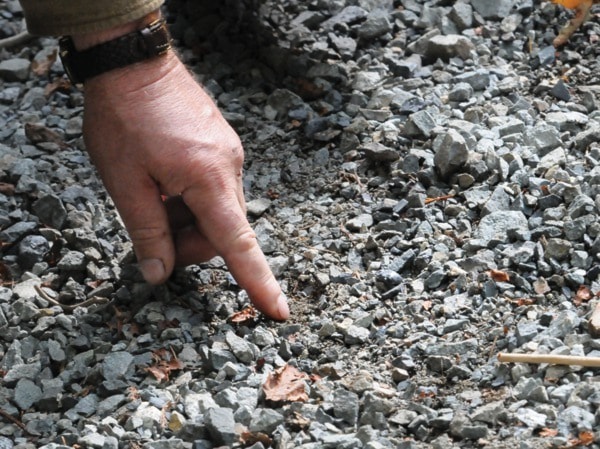The second part in a two-part feature about The Erickson Project, the first multi-site field study of the sasquatch in Canada and the U.S. with the goal to have it recognized as a species.
Click here for Part 1 of Is It Out There?
In a Texas lab, blood, saliva, hair and flesh from what’s believe to sasquatch are being analyzed and sequenced for a genetic blueprint.
For now though, what Dr. Melba Ketchum has learned about the animal is a secret.
“As an ethical scientist” Dr. Ketchum won’t comment on any of sasquatch DNA testing or her findings until her research has been submitted to a journal and has passed a confidential peer review by experts in the field.
Ketchum’s company DNA Diagnostic Inc. specializes in multi-species testing including human as well as animal DNA analysis for individuals, law enforcement, breed associations and state regulatory agencies. It usually runs tests for pet owners pining to find out whether bones discovered in the woods behind their homes belong to beloved Fluffy or Fido who met their demise in the jaws of a coyote.
Ketchum stresses the DNA testing is being done independently of the Erickson Project, the first multi-site field study of the sasquatch in Canada and the U.S. with the goal to have it recognized as a species.
“The peer review is essential to protect the integrity of a study by independently verifying the scientific analysis and conclusions in order to minimize people claiming this research as another bigfoot hoax or fraud,” said Ketchum.
She hopes to have the peer review complete and results ready for release by the end of the year.
To prevent people with “some limited knowledge of the ongoing DNA testing from trying to make premature disclosures or claim unfounded credit,” everyone associated with the research is under a legally binding non-disclosure agreement that includes Adrian Erickson, the man who filmed what he believes are sasquatch in Maple Ridge and other research sites in the U.S.
But getting a new species recognized isn’t an easy task.
Since 2000, there have been many new species “described” but none “discovered” by science.
Most of these were species initially thought to be the same, but which are now split into two groups.
For example, a sloth thought to be a normal three-toed sloth was found to be a separate species after DNA analysis, explains Arne Mooers, a professor of biology at Simon Fraser University.
In terms of real discoveries, the most recent large mammal stumbled upon was the Pseudoryx nghetinhensis or Saola, a bovid (ox) found in Laos and Vietnam in 1992.
Another large mammal – Balaenoptera omurai, a whale which range from 8 to 28 metres, was formally described in 2003.
Mooers finds it hard to believe a bipedal primate has been in North America’s forests and mountains for centuries.
It is too big, he says, pointing out that many of these sasquatch hideouts happen to be rather close to urban areas and suburban subdivisions – but have yet to cough up skulls or bones.
North America would also be the last place he’d consider exploring for a new species of primate.
“The only primate that lives outside the tropical region is us,” says Mooers.
“There’s a macaque that lives in southern Japan but all other primates lives in equatorial or sub-equatorial regions.”
But if someone drove out of the mountains with a dead sasquatch strapped to the hood of their car, it would change his mind.
“Never say never,” he says.
•••
John Bindernagel is one of the few biologists in the world who readily admits the sasquatch is an extant or “real” animal.
Based in Courtney on Vancouver Island, he is more concerned with addressing ecological questions such as how it over-winters in the colder regions of North America and its range.
The best proof for Bindernagel are the tracks left behind by sasquatch, especially when those foot prints which have been cast in plaster.
Other evidence lies in sightings.
“I’ve just heard so many sincere, eyewitness accounts,” says Bindernagel, who has written two books on the subject.
“These people do not want to tell me their reports. You almost have to drag it out of them.”
Hoaxes are a big reason why scientists steer clear of sasquatch. Bindernagel believes referring to sasquatch as “Bigfoot” doesn’t help either. “We need to convince them to look at the evidence which is what they’ve been unwilling to do so far,” he said.
“Many discoveries have taken sometimes a century to be fully accepted. It’s exactly what we are dealing with here. It’s a de facto discovery – a discovery made in fact but simply not recognized by the larger scientific community.”
•••
Tales about sasquatch roaming Golden Ears Provincial Park and thwarting bear-proof bins to snack on garbage amuse Stu Burgess.
As park manager, he’s responsible for the “front country” – an area one kilometre from the park’s main road that includes horse trails and campsites. He’s yet to catch sight of any ape-man or – for that matter – odd-looking, seven-foot tall bears with the gait of super models.
“I’ve been working up here for 17 years and in that time, I’ve seen two cougars,” he says with a laugh.
The Erickson Project intends to release their documentary Sasquatch: The Quest in conjunction with the DNA test results.
